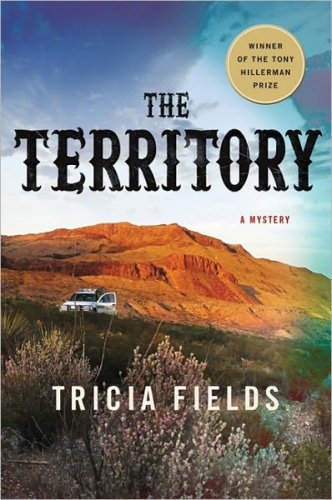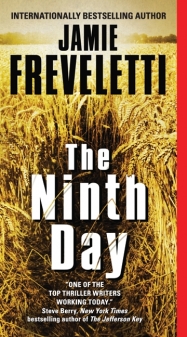By Bill Hirschman
 The zeitgeist of the world long ago caught up to John le Carré’s Cold War vision of gray civil servants wearily battling their bureaucratic masters as much as the external evils threatening the public, an almost Sisysphean task of protecting society in a world of uncertain loyalties, debatable ethics and ephemeral outcomes.
The zeitgeist of the world long ago caught up to John le Carré’s Cold War vision of gray civil servants wearily battling their bureaucratic masters as much as the external evils threatening the public, an almost Sisysphean task of protecting society in a world of uncertain loyalties, debatable ethics and ephemeral outcomes.
So the overwhelming but total justification to revisit the 1979 BBC TV mini-series le Carré’s Tinker Tailor Soldier Spy (just re-released on DVD from Acorn Media) is not to learn anything new. It’s to revel in the superb artistry of cinematic storytellers deftly transferring a complex, thought-provoking work from one medium to another.
Notable for the work of Alec Guinness, director John Irvin and screenwriter Arthur Hopcraft, this brooding yet riveting six-hour spy story is the product of a troupe of highly skilled craftsmen creating what le Carré himself says is the best adaptation of his work.
The premise sounds simple but it is dense, elliptical and covertly suspenseful in its unveiling: A bureaucratic coup has ousted old-line British spymaster Control and his second in command, the graying George Smiley (Guinness). The coup came just as Control was trying to discover who in his top-level of lieutenants is actually a long-time Russian mole. Smiley is quietly asked by Whitehall to come out of retirement to discover the traitor inside the intelligence service named the Circus, despite having few resources, no authority and almost no one to trust.
Le Carré’s books and films, starting with The Spy Who Came in From the Cold, are often described as the real world antithesis of James Bond. This is spycraft without gadgets: a simple wedge in a door is used to keep out interlopers during a black bag job.
Records are not computerized, but kept in dog-earred file folders. There is no glamour or glory, only self-doubt whether the altruistic ends justify the ethically-challenged means. The sparing amounts of violence, on screen and off, are all the more harrowing because the consequences here are prolonged torture and sudden death.
More importantly, the books and this film capture the paranoia and fear as well as any historical document can. Some critics predicted when the Cold War ended that le Carré’s career was over because his genre became irrelevant. This mini-series underscores why that didn’t happen: le Carré’s real focus were the people operating in, around and despite institutions that used ethics and pragmatism, loyalty and betrayal as the coins of the realm. Tales investigating moral ambiguity never go out of style.
Irvin, cinematographer Tony Pierce-Roberts and production designer Austen Spriggs evoke a gloomy and ominous sense of place, not just in England, but of the purgatory of Czechoslovakia (which you’ll be saddened to hear was really filmed in a downtrodden region outside Glasgow.
Another of the film’s virtue is its pacing. Never plodding, its stately gait actually ratchets up the tension. For six hours, (and it’s a plus to see it in one or two sittings) you think of that old cliché, the noose tightening – a noose that strangles people to a very real and horrible death. At the end of each hour’s episode, I found myself not taking a break, but sticking the next DVD in the machine.
Tinker marks one of Guinness’ last great performances (it was sandwiched between the first two Star Wars films). It’s a testament to his genius at internalized acting, often using a subtle pained glance or slight cock of the head to communicate severely-banked emotions and an incisive mind cloaked in a deceptively bland exterior.
The rest of the cast is an amazing collection of character actors whose faces everyone knows if not their names, many of them now dead: Ian Bannen as the consummate field agent, Ian Richardson as an urbane supervisor and Alexander Knox, looking dead already, as the fatally ill Control who is stunned by the horror of the betrayal of his staff. Patrick Stewart has a memorable scene as a captured Soviet spy who does not utter a word and simply glares malevolently with the steadfast ferocity of a true believer.
Hopcraft pulled off the daunting task of making as clear as possible le Carré’s elliptical storytelling. Le Carré’s love of Byzantine plotting here (brought to a head in A Perfect Spy) communicates the author’s goal of making the reader/viewer feel as confused and unmoored as the characters.
A new film version starring Gary Oldman and Colin Firth is due out in December; the trailers look promising. But two questions: first, why bother remaking Casablanca or Citizen Kane? Second, at two hours rather than six, a great deal is going to have to be excised when the complexity is the point.
This package contains a booklet listing the entire cast, a dictionary of le Carré’s totally invented spycraft jargon, a description of who each character is to help viewers sort out the mess, a 20-minute interview with le Carré (or David Cornwall), and abbreviated filmographies of the major actors so you don ‘t have to run to IMDB.
Side note: If you love this kind of work, catch the continuing modern British spy series, MI-5 (known as Spooks in Britain), and, even better but harder to find, The Sandbaggers (1978-1970) a British TV series covering the same territory as le Carré, but even darker. All are on DVD.
Tinker Tailor Soldier Spy available on Acorn Media

 The ebook phenomenon has allowed many authors to republish their back lists, those novels out of print and even redo some work.
The ebook phenomenon has allowed many authors to republish their back lists, those novels out of print and even redo some work. Crime fiction's relevance comes up daily. Many of the novels I read seem to have their plots ripped from the headlines, tackling the issues that our society deals with. These novels are not just who-done-its but the modern social novel, giving us insight to world events with plots that put us on the scene.
Crime fiction's relevance comes up daily. Many of the novels I read seem to have their plots ripped from the headlines, tackling the issues that our society deals with. These novels are not just who-done-its but the modern social novel, giving us insight to world events with plots that put us on the scene.  Valentine is recruited by a U.S. agent to infiltrate a powerful Mexican mafia family. Valentine ends up at the “triple border” of Argentina, Brazil and Paraguay that is full of smugglers and terrorists.
Valentine is recruited by a U.S. agent to infiltrate a powerful Mexican mafia family. Valentine ends up at the “triple border” of Argentina, Brazil and Paraguay that is full of smugglers and terrorists. When the relentless violence of the drug cartels reach innocent people, the reader feels for each character affected. Many of us can't wrap our brains about how massive are the issues of immigration and drug cartels. These seem like unsolvable problems fraught with politics, bribes and violence.
When the relentless violence of the drug cartels reach innocent people, the reader feels for each character affected. Many of us can't wrap our brains about how massive are the issues of immigration and drug cartels. These seem like unsolvable problems fraught with politics, bribes and violence.
